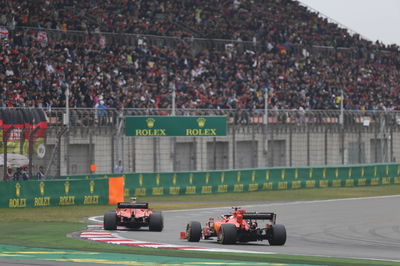Reliability concerns prompted Ferrari CE changes
Reliability concerns over the control electronics for Ferrari’s Formula 1 engine led to the raft of changes made by Ferrari-powered teams at the Chinese Grand Prix.
Ferrari introduced new control electronics for its power unit in Shanghai following the issue that robbed Charles Leclerc of a maiden grand prix victory in Bahrain.

Reliability concerns over the control electronics for Ferrari’s Formula 1 engine led to the raft of changes made by Ferrari-powered teams at the Chinese Grand Prix.
Ferrari introduced new control electronics for its power unit in Shanghai following the issue that robbed Charles Leclerc of a maiden grand prix victory in Bahrain.
One of the cylinders in his engine stopped working in the closing stages and resulted in Leclerc dropping out of contention for the win and down to third. Ferrari later attributed the failure to a short circuit within an injection system, something it said it had never encountered before.
While Ferrari did not have to change the power unit on Leclerc’s car itself, fears over reliability led to the team introducing new components in China, which were also made available to customer teams Haas and Alfa Romeo.
It has subsequently moved Leclerc and teammate Sebastian Vettel onto their second CE unit of the year. Drivers are permitted only two CE component changes per season before incurring grid penalties.
“We changed it because on Charles’ car, it failed during Bahrain, so we knew that with the initial spec of the control units we had some reliability issues, so we changed it simply for a better unit,” team principal Mattia Binotto explained.
“We changed it on Seb as well, for precaution. We had to change it certainly on Charles because it was failed, and we asked our customer teams as well to change them. Haas did it.”
Alfa Romeo did not follow Ferrari in making the changes after encountering some engine installation issues during opening practice on Antonio Giovinazzi’s car. The problem occurred again ahead of qualifying, resulting in the Italian’s no-show in Q1.
“Alfa didn’t do it for installation issues, they felt it was too complicated and too risky for the changes they had to do on the installation,” Binotto added.
“As a result, Antonio Giovinazzi had an issue again in qualy, so hopefully it will be changed as soon as possible on that car as well.”
Binotto stressed the changes had “no impact” on the performance of Ferrari’s engine as the Scuderia lagged behind Mercedes in qualifying and the race.










